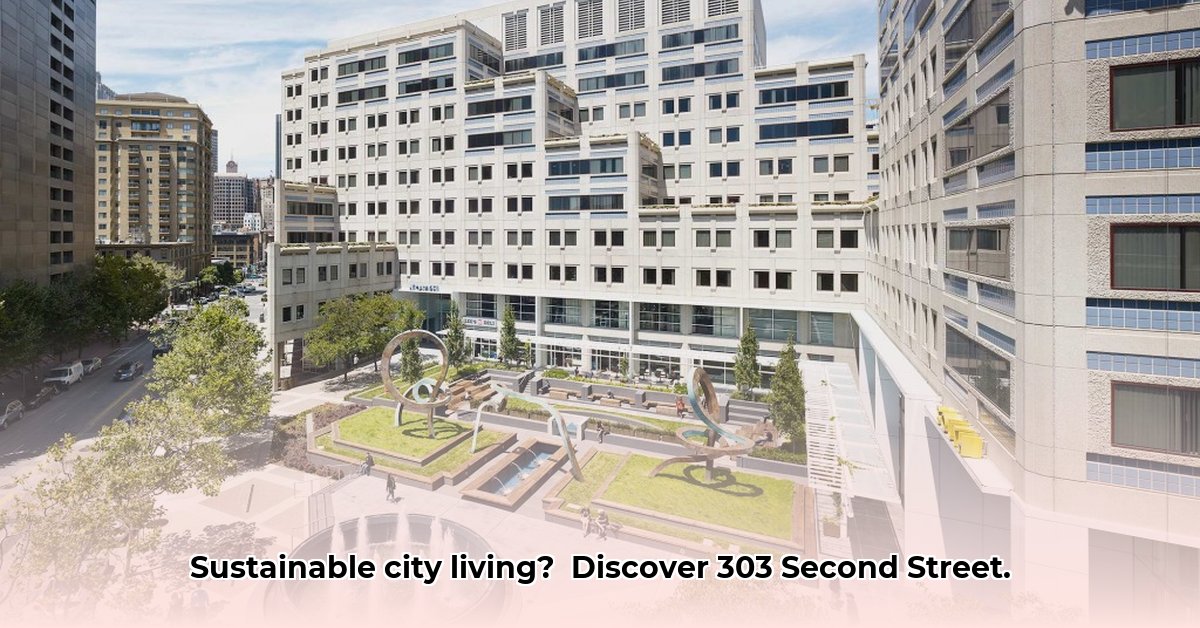
303 Second Street: A Case Study in Sustainable Urban Development
303 Second Street, nestled in San Francisco's vibrant SoMa district, serves as a compelling case study in sustainable urban development. More than just an office building, it exemplifies how thoughtful design and a community-centric approach can create a truly thriving urban space. Its strategic location adjacent to the Salesforce Transit Center significantly reduces reliance on private vehicles, instantly contributing to a smaller carbon footprint. This smart urban planning minimizes congestion and promotes a greener commute for its occupants. But 303 Second Street's success goes beyond mere location; it's a testament to the power of holistic urban design.
Is it truly possible to blend architectural beauty with environmental responsibility and community engagement? 303 Second Street provides a compelling answer. Built in 1988, the building's longevity highlights the value of durable, well-designed construction and sustainable practices, suggesting that what we build today can last for decades to come: a powerful argument for thoughtful planning.
This case study will examine the key elements contributing to 303 Second Street's success, analyzing its impact on the surrounding community and offering insights into replicating its model for future urban development projects. While detailed quantitative data on energy efficiency and other key metrics remains unavailable at this time, the building's qualitative strengths are undeniably significant.
Key Factors in 303 Second Street's Success
Several pivotal factors contribute to the success of 303 Second Street:
Prime Location and Transit Accessibility: Its proximity to the Salesforce Transit Center significantly reduces reliance on personal vehicles, positively impacting both the environment and the convenience of its occupants.
Community-Focused Design: The inclusion of a generous outdoor plaza fosters a vibrant social hub, encouraging interaction between building tenants and the broader community. This dynamic public space enhances the overall livability of the area.
Adaptive Reuse and Long-Term Vision: The building's continued success over three decades demonstrates the inherent flexibility and durability of well-executed design, showcasing the value of long-term planning and adaptable architecture.
Stakeholder Perspectives and Future Goals
The success of 303 Second Street depends on a collaborative effort from various stakeholders. Their short-term and long-term goals illustrate a commitment to ongoing improvement and sustainability.
| Stakeholder | Short-Term Goals (0-1 Year) | Long-Term Goals (3-5 Years) |
|---|---|---|
| Building Management | Conduct a thorough energy audit; release a comprehensive sustainability report. | Explore advanced upgrades such as solar panels and rainwater harvesting systems; proactively track environmental metrics. |
| City Planners | Analyze the building's success as a model for future sustainable building initiatives. | Develop policies encouraging similar environmentally-conscious projects; invest in further improvements to public transport. |
| Developers | Focus on replicating the successful community-building aspects of the design; integrate mixed-use models into future projects. | Prioritize sustainable practices and community engagement in future development projects. |
| Potential Tenants | Seek out workplaces that prioritize both sustainability and a strong sense of community. | Actively engage with the building and broader community; promote socially responsible practices. |
Quantifying Sustainability: A Path Forward
How can we better measure the environmental impact of buildings like 303 Second Street? While qualitative observations suggest a strong commitment to sustainability, a comprehensive quantitative analysis is crucial for a complete understanding of its impact. To accurately assess its environmental performance, a detailed energy audit and a transparent sustainability report are necessary.
This data would enable comparisons to industry benchmarks, providing a clear picture of the building's environmental achievements and potential for improvement. Key metrics to consider include energy efficiency (kWh/m²), water consumption (liters/m²), waste diversion rates, and a complete life-cycle carbon assessment. The adoption of standards like LEED certification would further enhance transparency and provide a framework for quantifiable measurements.
Conclusion: Inspiring Future Sustainable Development
303 Second Street stands as a beacon, highlighting the potential for creating vibrant and sustainable urban environments. Its success, while currently primarily evidenced qualitatively, demonstrates the potential of integrating environmental consciousness, community engagement, and smart design into a single project. By completing a thorough data collection process and establishing clear metrics for measuring sustainability, 303 Second Street can set a precedent for future developments, both in San Francisco and beyond. The potential for replication and adaptation is vast; the detailed collection and publication of quantifiable sustainability data is therefore critical for informing, inspiring, and guiding future projects. The future of sustainable urban development depends on such detailed analysis and clear, measurable goals.